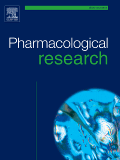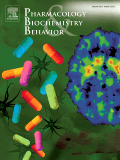
“Spinocerebellar ataxia type-3 (SCA-3) is a rare disease but it is the most frequent type within the autosomal dominant inherited ataxias. The disease lacks an effective treatment to alleviate major symptoms and to modify disease progression.
Our recent findings that endocannabinoid receptors and enzymes are significantly altered in the post-mortemcerebellum of patients affected by autosomal-dominant hereditary ataxias suggest that targeting the endocannabinoid signaling system may be a promising therapeutic option.
Our goal was to investigate the status of the endocannabinoid signaling system in a transgenic mouse model of SCA-3, in the two CNS structures most affected in this disease –cerebellum and brainstem-.
These animals exhibited progressive motor incoordination, imbalance, abnormal gait, muscle weakness, and dystonia, in parallel to reduced in vivobrain glucose metabolism, deterioration of specific neuron subsets located in the dentate nucleus and pontine nuclei, small changes in microglial morphology, and reduction in glial glutamate transporters.
Concerning the endocannabinoid signaling, our data indicated no changes in CB2 receptors. By contrast, CB1 receptors increased in the Purkinje cell layer, in particular in terminals of basket cells, but they were reduced in the dentate nucleus.
We also measured the levels of endocannabinoid lipids and found reductions in anandamide and oleanolamideoyleth in the brainstem. These changes correlated with an increase in the FAAH enzyme in the brainstem, which also occurred in some cerebellar areas, whereas other endocannabinoid-related enzymes were not altered.
Collectively, our results in SCA-3 mutant mice confirm a possible dysregulation in the endocannabinoid system in the most important brain structures affected in this type of ataxia, suggesting that a pharmacological manipulation addressed to correct these changes could be a promising option in SCA-3.”
http://www.sciencedirect.com/science/article/pii/S0306452216305012









